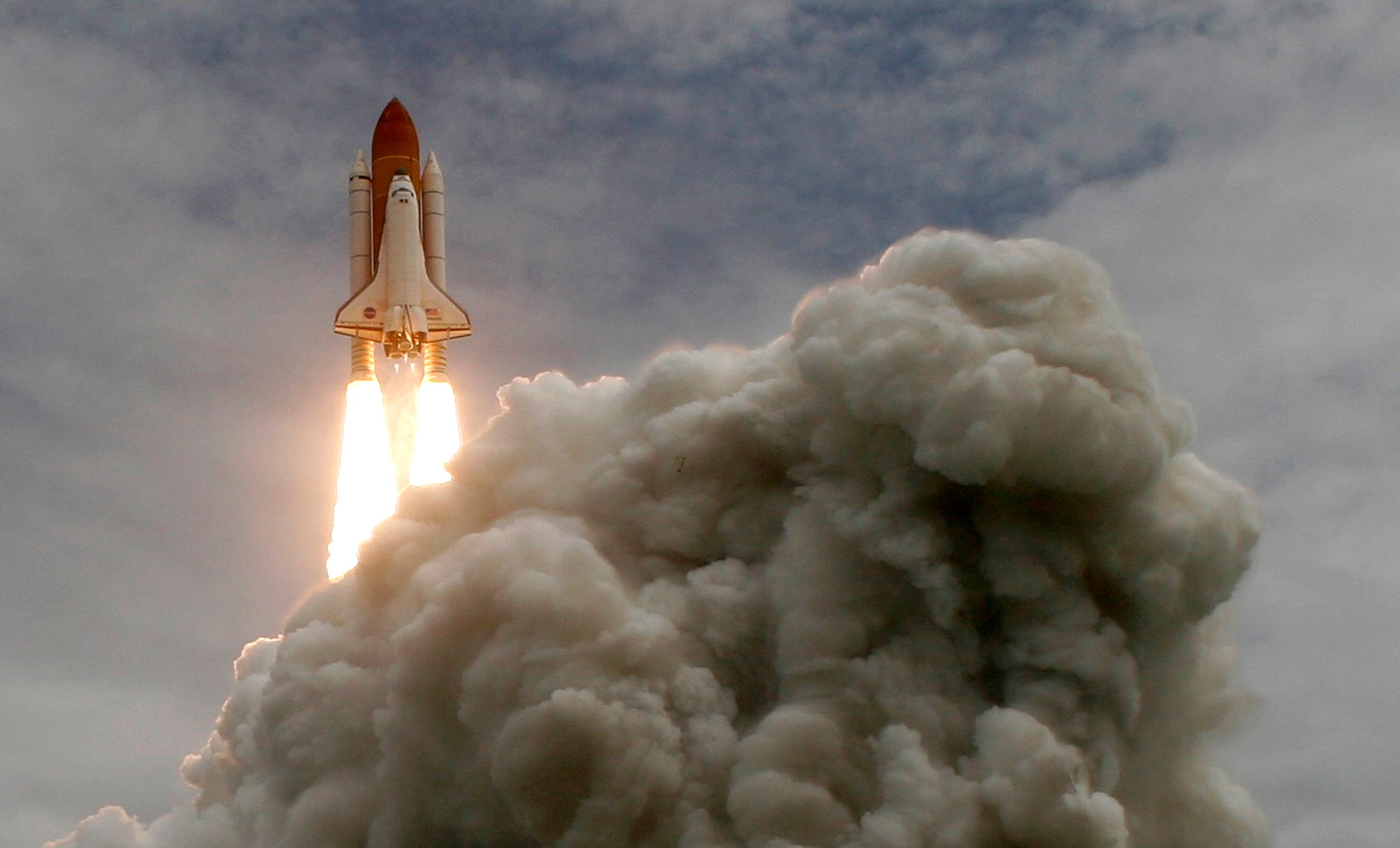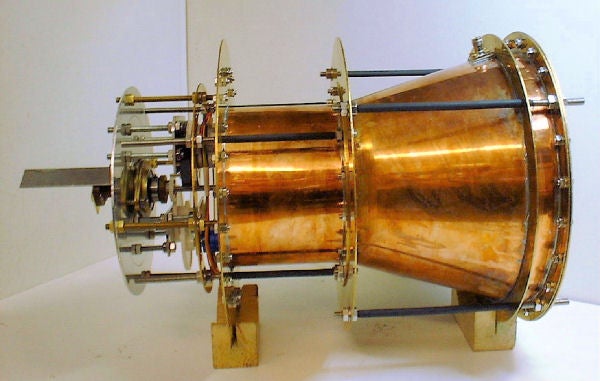Nasa approves 'impossible' space engine design that apparently violates the laws of physics and could revolutionise space travel
Engineers from the space agency managed to produce tiny amounts of thrust using a microwave engine design that could turn space travel on its head

In a quiet announcement that has sent shockwaves through the scientific world, Nasa has cautiously given its seal of approval to a new type of “impossible” engine that could revolutionize space travel.
In a paper published by the agency’s experimental Eagleworks Laboratories, Nasa engineers confirmed that they had produced tiny amounts of thrust from an engine without propellant – an apparent violation of the conservation of momentum; the law of physics that states that every action must have an equal and opposite reaction.
Traditional spacecraft carry vast amounts of fuel with them into orbit in order to move about, using the thrust created by this fuel to move in zero gravity like a swimmer in a pool pushing off against a wall. This method works fine but it's costly - both in terms of obtaining the fuel and then launching all that extra weight into space.

Nasa’s engineers have tested an engine known as a ‘Cannae Drive’, a machine that instead uses electricity to generate microwaves, bouncing them around inside a specially designed container that theoretically creates a difference in radiation pressure and so results in directional thrust.
In an ordinary engine the rocket moves forward as fuel is flung backwards - the momentum of the rocket (a measure of both its mass and velocity combined) is 'conserved' because it is moved from the rocket to the fuel. However, with the Cannae Drive there is no fuel - the microwaves aren't expelled from the engine (as ions are with weak-but-reliable Ion Thrusters) they're just kind of moved about within the container.
All this might be theoretical no more however. Nasa’s scientists tested a version of the drive designed by US scientist Guido Fetta and found that the propellant-less engine was able to produce between 30 and 50 micronewtons of thrust – a tiny amount (0.00003 to 0.00005 per cent of the force of an iPhone pressing down when held in the hand) but still a great deal more than nothing.
(Fetta has said that the name refers to the Battle of Cannae when a small Carthaginian force led by Hannibal improbably defeated a much larger Roman army - although many have suggested that he is also referring to the engineer Scotty in the Star Trek series and his recurring and plaintive protest that he 'cannae change the laws of physics'.)
It's not surprising then that Nasa is presenting its positive test results as objectively as possible, with its engineers making no attempt to explain the mechanisms at play and instead only reporting on the integrity of the test procedures and their results. They did, however, allow themselves a brief moment of speculation:
"Test results indicate that the RF resonant cavity thruster design, which is unique as an electric propulsion device, is producing a force that is not attributable to any classical electromagnetic phenomenon and therefore is potentially demonstrating an interaction with the quantum vacuum virtual plasma.” (emphasis added).

This 'quantum vaccum' is what the microwave drives might theoretically be 'pushing off' against - it's essentially a dimension of the Universe that represents the lowest energetic state physically possible; a ‘base layer’ of reality that physicists sometimes suggest might be the origin of the equally mysterious ‘dark energy'.
If all this sounds like the realm of science fiction, well it is - so far. Despite multiple experiments now confirming that these ‘impossible’ drives work, there’s still plenty of room for mistakes (see for example the 2011 CERN experiments that mistakenly observed faster-than-light neutrinos) and recreating the physical vacuum necessary for the tests could go wrong in countless ways.
Still, if further experiments continue to confirm the reality of these microwave thrusters then it could trigger a new era of space travel. Nasa's involvement is no guarantee of success, but it does suggest that scientists are taking the possibility of 'impossible' engines seriously. Perhaps we should too.
Join our commenting forum
Join thought-provoking conversations, follow other Independent readers and see their replies
Comments